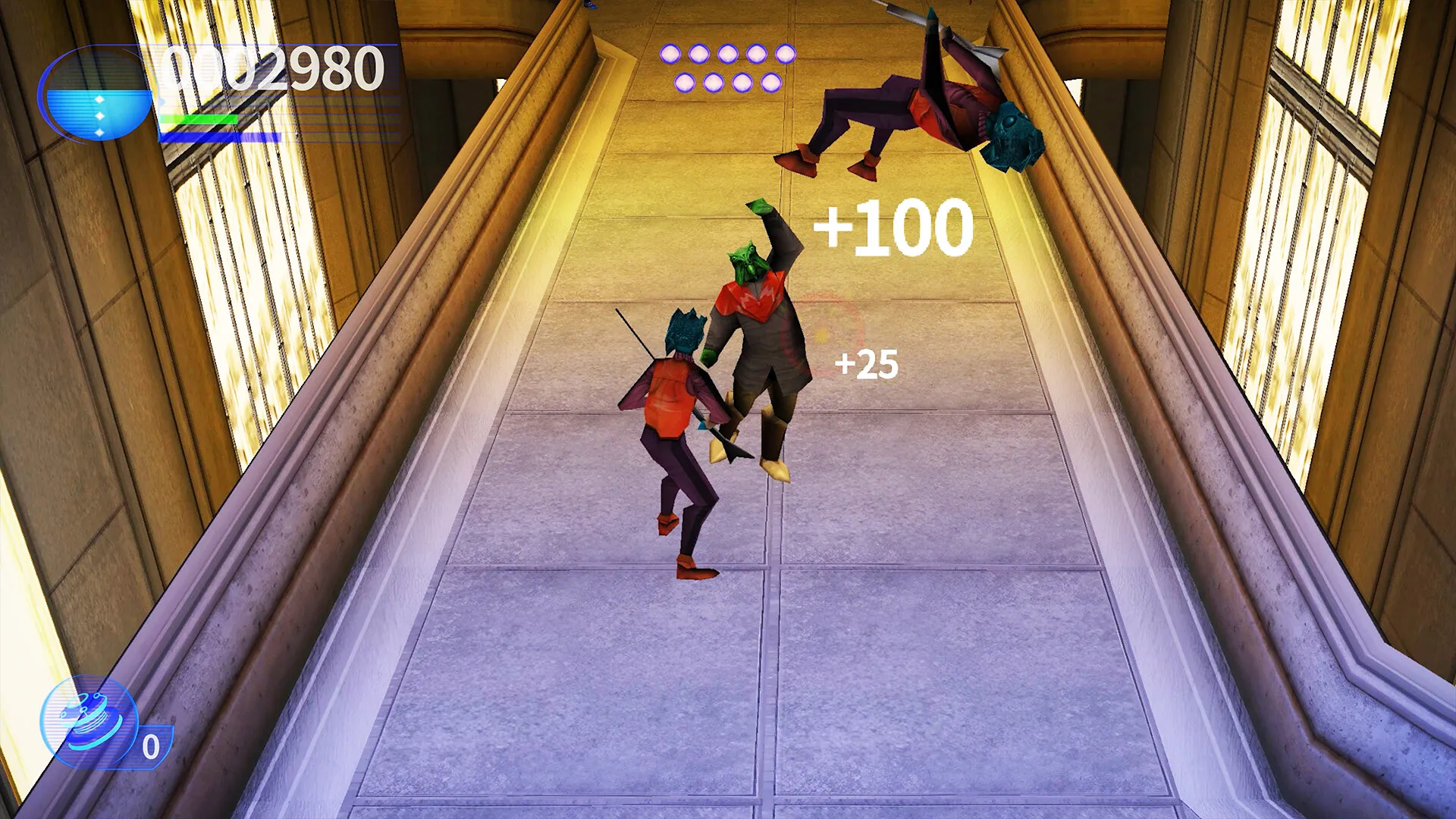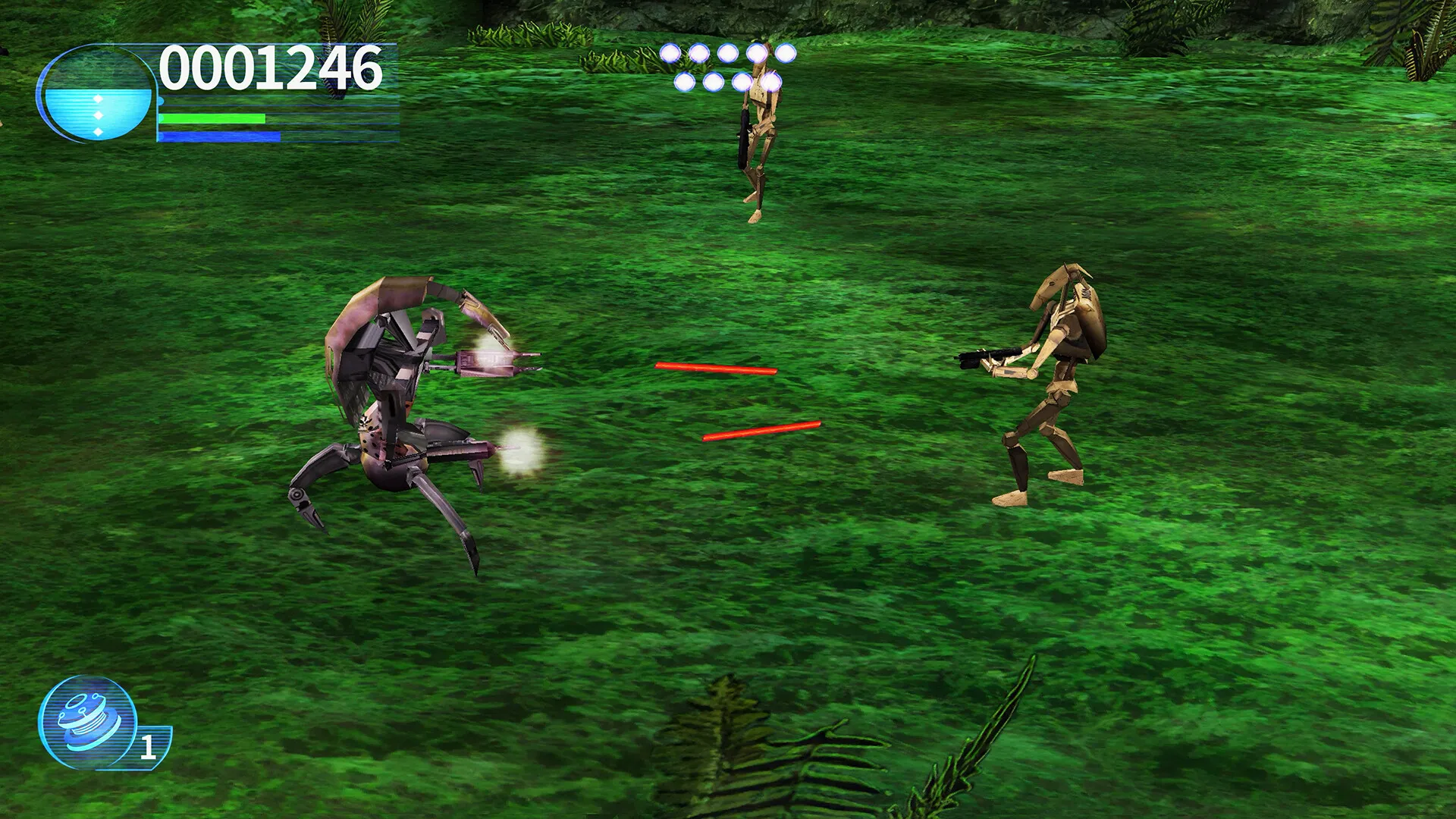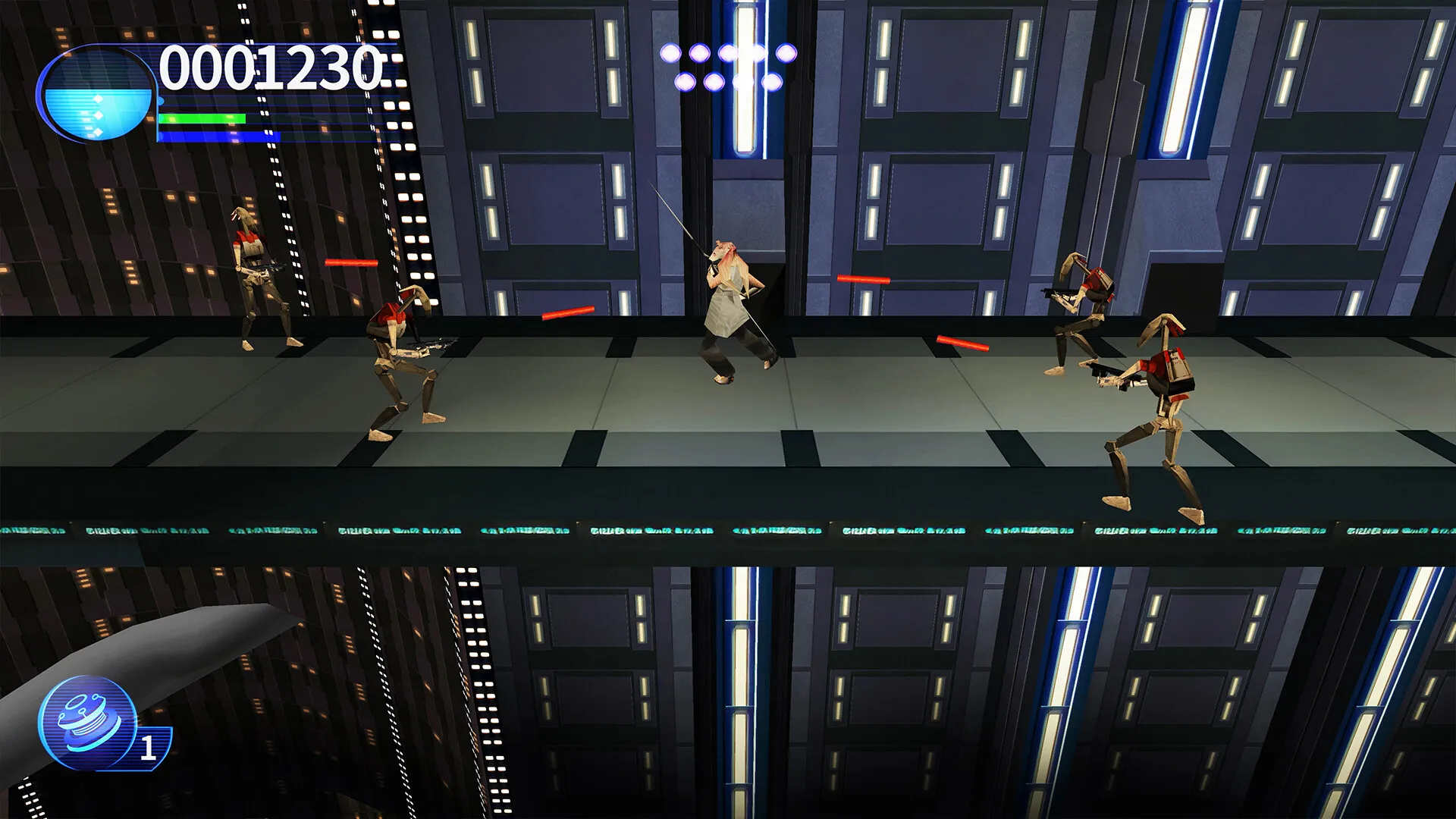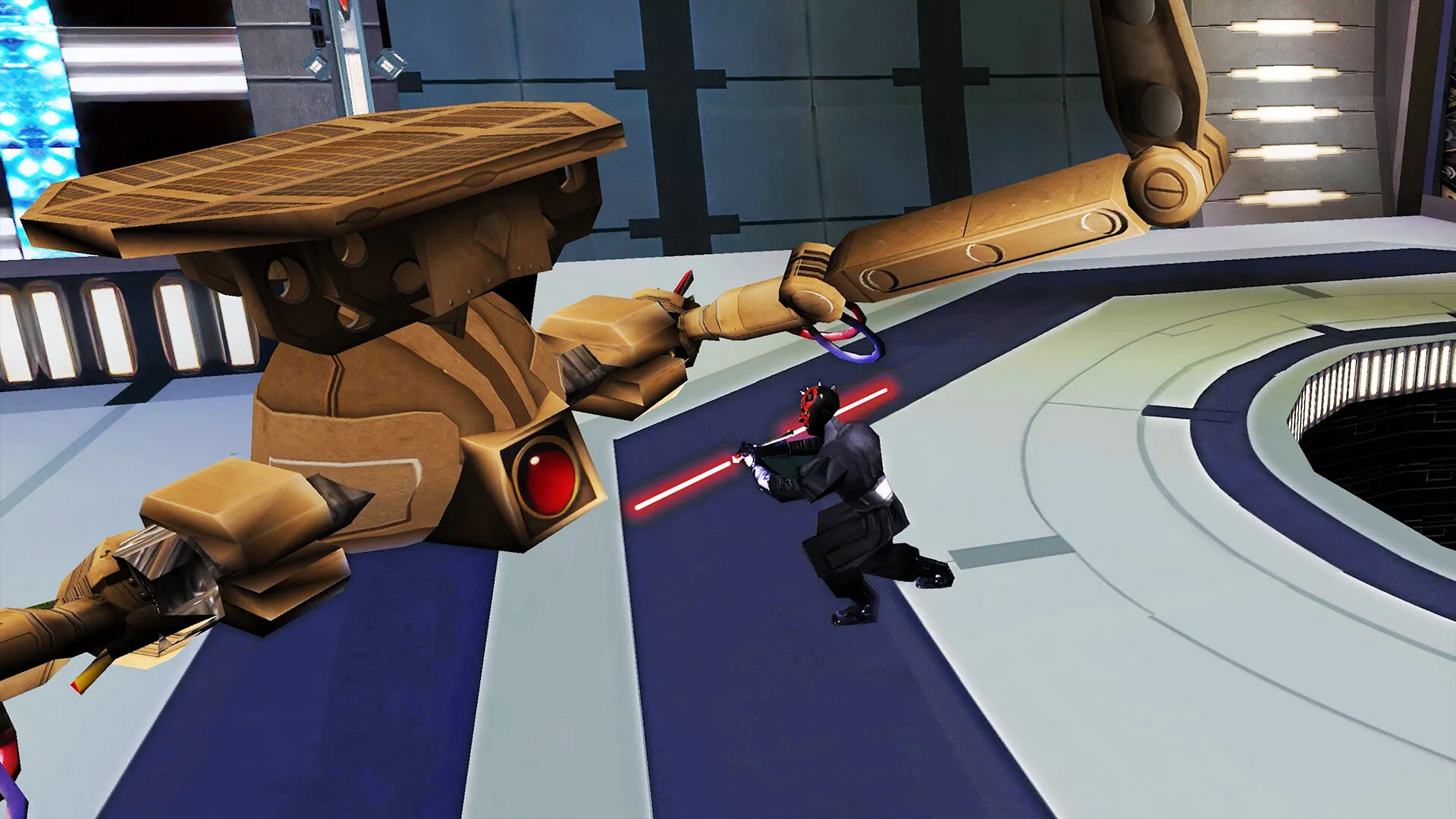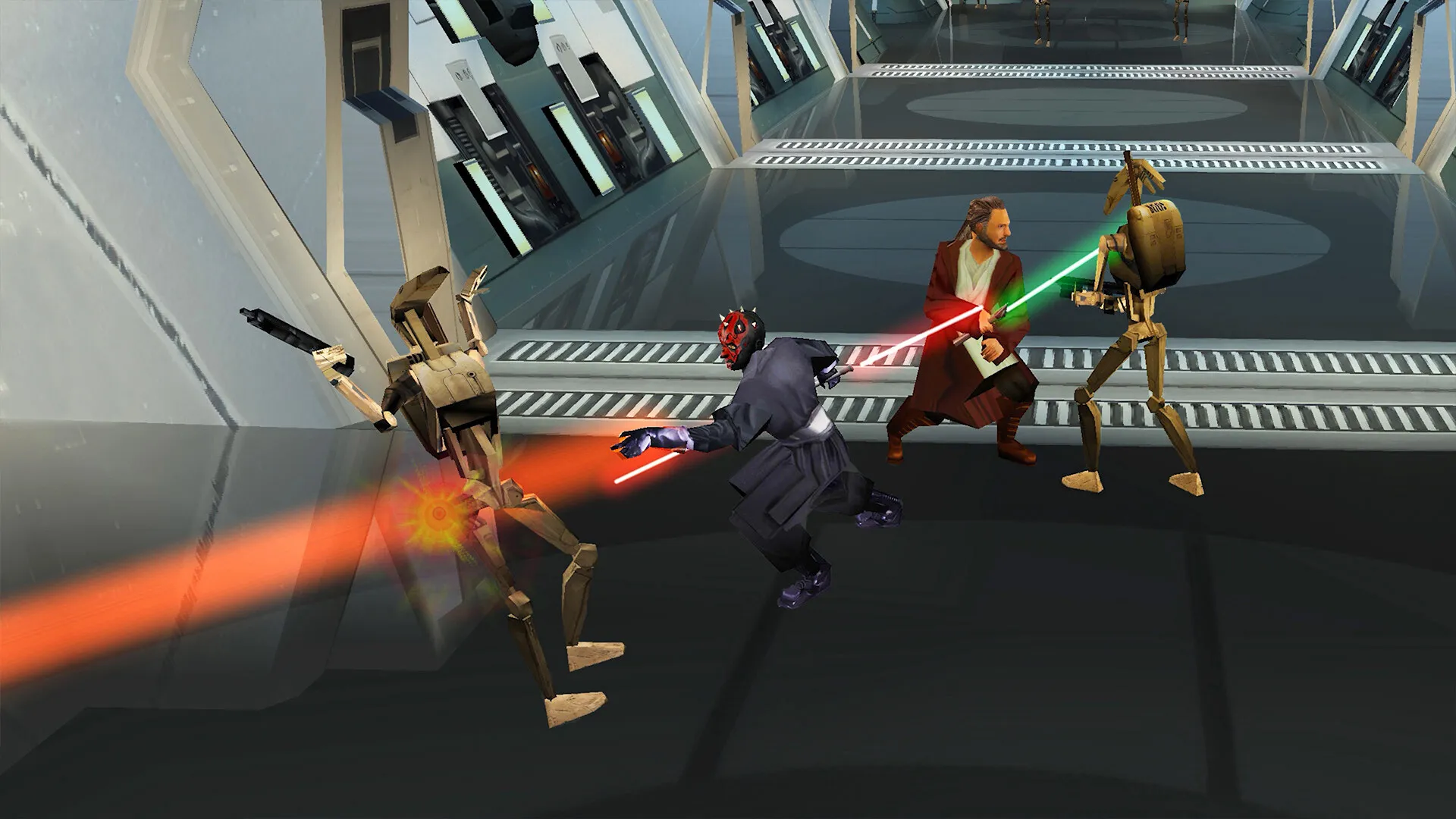Star Wars Episode I: Jedi Power Battles emerged in 2000 during the Star Wars revival sparked by The Phantom Menace. A side-scrolling action game, it allowed players to control Jedi characters like Qui-Gon Jinn and Obi-Wan Kenobi through levels inspired by the film. Players initially received the game with mixed reactions, yet it gained recognition as a memorable gaming experience.
In 2025, Aspyr released Jedi Power Battles on new gaming platforms with a port based on the Dreamcast version. The release maintains the game’s original structure while offering updated graphics and refined controls.
The port keeps the game’s original challenging elements and cooperative gameplay, creating an experience that will resonate with longtime fans. Priced at $20, the game targets players who remember the original release, though its straightforward mechanics and limited gameplay might feel outdated for players accustomed to contemporary Star Wars video games.
Gameplay Mechanics and Combat
Star Wars Episode I: Jedi Power Battles presents a side-scrolling action experience featuring combat and light platforming elements. Players control Jedi characters, using lightsabers and Force skills to fight through Battle Droids across ten levels based on The Phantom Menace.
The gameplay centers on battling enemies, overcoming environmental challenges, and experiencing occasional vehicle sequences. Controls remain simple, with attacks, jumps, and Force abilities mapped to different buttons. The game’s accessibility comes with limitations, lacking the sophisticated mechanics found in later Star Wars action titles.
Combat mechanics offer several engagement options. Players execute horizontal and vertical lightsaber strikes, create combo sequences, and utilize Force Push or Lightning against opponents. Blocking and deflecting blaster shots creates moments of Jedi expertise.
Despite these features, combat can feel repetitive and slow, with enemies requiring multiple strikes and movement feeling rigid. The experience falls short compared to classic beat-em-up games, struggling with pacing and enemy design.
The game’s challenging nature creates distinct player experiences. Imprecise platforming mechanics frequently cause player deaths, especially when enemies can knock characters from platforms. A strict lives system requires restarting entire levels after multiple failures. Technical problems like enemy rendering issues and inconsistent hit detection further complicate gameplay, creating unpredictable player encounters.
Story and Level Design
Star Wars Episode I: Jedi Power Battles tracks the plot of The Phantom Menace, condensing film events into ten stages. The game starts with trade negotiations on the Trade Federation ship and moves through key Star Wars locations like Naboo, Tatooine, and Coruscant.
The narrative takes a secondary role, with each stage introduced by brief text instead of detailed storytelling. This method suits a gameplay-focused experience but might leave players unfamiliar with the movie feeling disconnected.
Game stages stand out by presenting varied Star Wars settings that echo the prequel trilogy. From Naboo’s verdant swamps to Coruscant’s active streets, each environment feels distinctive and visually rich.
Stage design includes vertical elements and environmental challenges like collapsing platforms and dangerous fans, which enhance gameplay variety. Some stages, such as the Tatooine section with Tusken Raiders, struggle with repetitive enemy encounters and sound elements.
Stages are structured as direct action sequences, where players fight enemy groups and navigate platforming obstacles. The rhythm moves quickly but can stall due to challenging platforming and unexpected player defeats.
Some stages include unique scenarios not seen in the film, like fighting giant forest grubs or driving a tank through Theed. Players earn upgrades based on performance, which adds replay value but cannot fully offset the game’s combat and pacing issues.
Playable Characters and Abilities
Star Wars Episode I: Jedi Power Battles presents six playable Jedi characters, including Qui-Gon Jinn, Obi-Wan Kenobi, and Mace Windu. Players can select from characters with varied attack styles and Force skills.
The game includes additional characters like Darth Maul, Queen Amidala, and Captain Panaka, though these feel like supplementary options rather than fully developed selections.
The Jedi characters demonstrate distinct combat approaches. Qui-Gon Jinn uses Force Push to manage enemy groups, while Mace Windu’s attacks target individual opponents with intense precision. Combat mechanics permit attack combinations, though the system feels less smooth compared to other action games. Character progression occurs through level performance, with players earning upgrades like health increases and new Force techniques.
Aspyr’s port introduces lightsaber color customization, connecting with contemporary Star Wars visual styles. The updated control scheme provides a more straightforward player experience. Despite these improvements, the game struggles with mechanical limitations such as rigid combat movements and imprecise jumping mechanics.
The game attempts to offer variety through multiple characters and customization options, but ultimately falls short of creating a deeply engaging Star Wars action experience.
Co-op Mode and Multiplayer Experience
Star Wars Episode I: Jedi Power Battles offers a two-player couch experience that lets gamers team up through ten campaign levels.
Players can coordinate attacks and rescue fallen allies while battling Battle Droids and exploring hazardous environments. The gameplay echoes classic beat-em-up styles similar to arcade action games, creating an engaging shared experience for Star Wars enthusiasts.
The multiplayer mode reveals significant challenges. Screen mechanics restrict player movement, causing frustrating platforming segments where players can accidentally force each other off-screen. Combat encounters become chaotic as enemies randomly switch attack targets, disrupting strategic planning. These mechanical limitations make cooperative play feel clunky compared to contemporary multiplayer games.
The game also includes a 2-player VS mode where participants can duel using different Star Wars characters. Despite stiff controls and limited combat options, the mode provides brief entertainment. Characters like Jar Jar Binks and Tusken Raiders contribute unexpected humor, transforming the mode into a lighthearted diversion rather than a serious competitive experience.
Visuals, Audio, and Technical Performance
Aspyr’s 2025 port of Star Wars Episode I: Jedi Power Battles offers visual updates, with cleaner environmental textures, improved character models, and enhanced lighting effects compared to the original Dreamcast version.
The graphical tweaks make the game more appealing on current screens, yet the title’s 2000-era roots remain evident. Low-poly models and blocky animations persist, and pre-rendered cutscenes, though slightly upscaled, keep their compressed, low-resolution quality. Unlike comprehensive remasters such as Crash Bandicoot N. Sane Trilogy, this port feels like a minimal refresh.
The audio presents mixed results. John Williams’ Star Wars score works well, with music matching each environment’s mood. Sound effects, however, prove repetitive and poorly balanced. Tusken Raider screams on the Tatooine level repeat endlessly, creating an annoying experience. Sound cutting out during certain missions further disrupts gameplay. While the music adds atmosphere, the sound design feels outdated and weak compared with recent Star Wars games.
Technical problems impact the player experience. Frame rate drops occur during cutscenes, and enemy pop-in can cause unexpected hits as opponents suddenly appear. Cooperative play encounters significant glitches, including game freezes at upgrade screens that force complete restarts. Such issues underscore the challenges of porting older games, revealing limitations in creating a seamless modern experience.
Conclusion and Final Thoughts
Star Wars Episode I: Jedi Power Battles offers a mixed experience for players. The game showcases diverse level design and captures the Star Wars atmosphere while letting players wield lightsabers in a side-scrolling action format.
The combat mechanics feel clunky, and platforming sections can become frustrating. Aspyr’s port introduces some visual and control enhancements, though fundamental gameplay limitations persist.
The game primarily resonates with Star Wars enthusiasts who remember the original 2000 release. Players seeking a polished, contemporary Star Wars gaming experience might find the title less engaging. Technical challenges and repetitive gameplay mechanics create barriers for newcomers.
While the game provides a nostalgic journey for long-time fans, its appeal remains limited. Players wanting a more refined Star Wars action experience might prefer alternative titles like Star Wars Jedi: Fallen Order. The current version serves a specific audience interested in revisiting a classic gaming memory.
The Review
Star Wars Episode I: Jedi Power Battles
Star Wars Episode I: Jedi Power Battles delivers a mixed gaming experience. The game showcases lightsaber combat and classic Star Wars environments that provide occasional entertainment. Technical limitations and awkward movement mechanics create significant challenges for players. Aspyr's updated version enhances graphical presentation and control responsiveness, though the fundamental gameplay remains unchanged. Dedicated Star Wars enthusiasts might appreciate the nostalgic elements, yet players unfamiliar with the original release could find the gameplay unsatisfying and dated.
PROS
- Nostalgic appeal for fans of the original game.
CONS
- Clunky and repetitive combat mechanics.
- Frustrating platforming and cheap deaths.
- Outdated difficulty and lives system.
- Technical issues like frame rate drops and enemy pop-in.
- Limited appeal for newcomers or modern gamers.









































